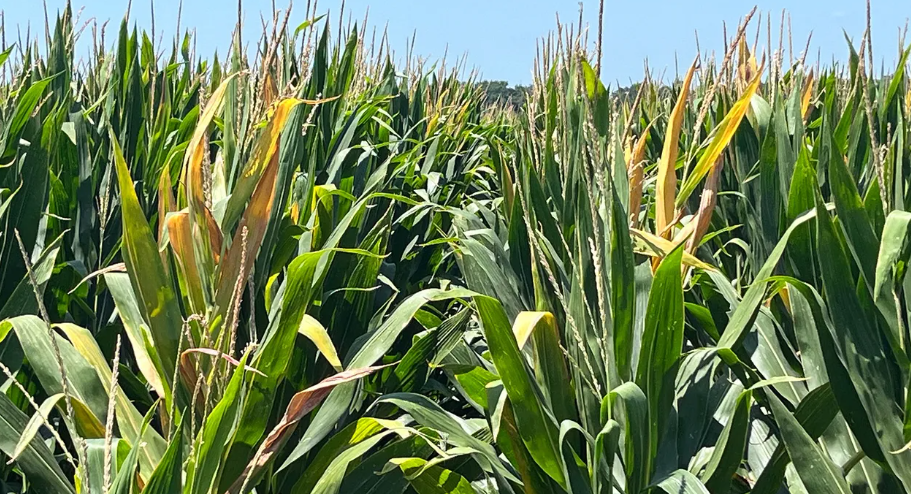For many farmers, the rainy season brings hope. The land is fertile, the crops are growing, and the harvest looks promising. But what happens when, in the middle of all this, your maize leaves begin to turn yellow? It’s frustrating and worrying.
Yellowing leaves, also known as chlorosis, are often a sign that something is off in the field. If you’ve noticed your maize looking pale or less vibrant during what seems like perfect weather, here are a few reasons why this might be happening and what you can do about it.
1. Loss of Nutrients Due to Excess Rainfall
Heavy rain can wash away essential nutrients from the soil, especially nitrogen, which is responsible for the lush green colour of maize leaves. Even if you applied fertilizer at planting, the nutrients may no longer be where the plant roots can access them.
What to look out for:
Yellowing that starts from the lower (older) leaves and moves upward is a classic sign of nitrogen deficiency.
What you can do:
Apply a top-dress of nitrogen-rich fertilizer (such as urea or CAN) around three to four weeks after planting. Split applications can be more effective—small doses spaced out reduce waste and help the plant absorb nutrients more steadily.
2. Early Pest Damage
Insects such as stem borers and armyworms frequently attack maize plants in their early stages, particularly during warm and wet periods. These pests can damage the stem and root system, reducing the plant’s ability to absorb nutrients and water.
What to look out for:
Holes in the leaves, damaged whorls, or plants that appear weak, even with good rainfall. You may also see pests in the central whorl of the plant.
What you can do:
Use an effective insecticide early in the season. Products like Kombat, Sting, or Cypertex can help control a wide range of pests before they cause serious damage. Regular monitoring of your field will also help you catch problems early.
3. Poor Drainage or Soil Compaction
While rain is necessary, too much of it, especially in poorly drained or compacted soils, can lead to waterlogging. When the soil stays soggy for too long, plant roots can’t breathe or absorb nutrients, leading to yellowing leaves and stunted growth.
What to look out for:
Water pooling on the soil surface after rain, slow plant growth, or darkened roots when the plant is dug up.
What you can do:
Improve your field’s drainage by creating channels or planting on raised beds or ridges. Avoid over-tilling or using heavy machinery, as this can compact the soil and worsen drainage.
4. Imbalanced Soil Nutrients
Nitrogen isn’t the only nutrient maize needs. Deficiencies in magnesium, zinc, or potassium can also cause yellowing, sometimes in unique patterns like stripes or leaf-edge discolouration.
What to look out for:
Striped yellowing between the veins (often due to zinc deficiency) or yellowing that starts at the leaf tips or edges.
What you can do:
Use balanced fertilizers that include secondary and micronutrients. Foliar sprays containing zinc or magnesium can also be beneficial. For long-term results, consider doing a soil test to understand exactly what your soil needs.
What Should You Do When You Notice Yellowing?
The most important thing is not to panic. Yellowing is a symptom, and once you understand the cause, you can take the right action. Pay attention to when and where the yellowing starts, and combine that with what you know about your fertilizer, pest control, and drainage practices.
Remember that every farm is different. What worked last season might need to be adjusted this year based on rainfall, soil condition, and pest pressure.
Wrapping up,
Acting early is key. Regular field checks, timely application of the right inputs, and good agronomic practices can help you turn the season around and protect your yield before it’s too late.
Let’s grow better, together.
And remember, you’re not alone. If you’re unsure about what product to use or have any questions about planting, you can always reach out to us on any of our social media platforms. We’re here to support you every step of the way.

Leave a Reply